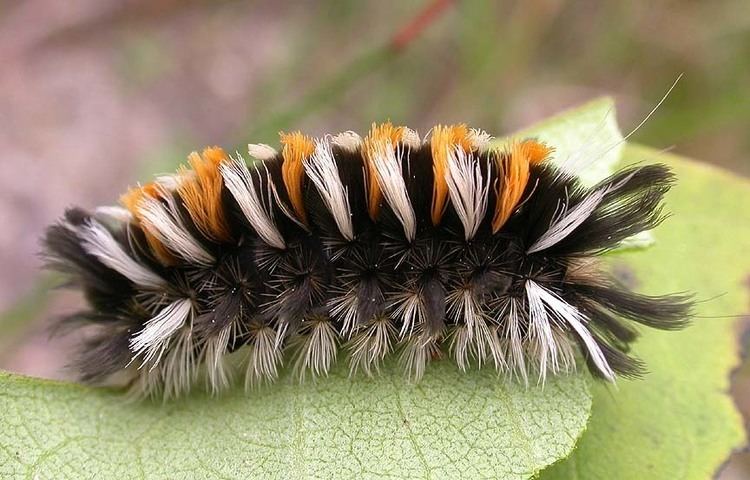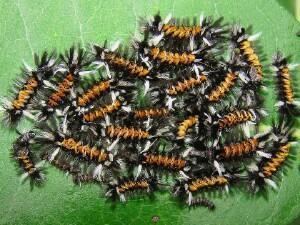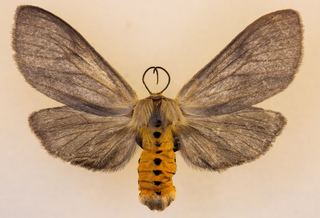 | ||
Similar | ||
Milkweed tussock caterpillar or euchaetes egle 4k
Euchaetes egle, the milkweed tussock caterpillar or milkweed tiger moth, is a moth in the family Erebidae. It is a common mid- through late-summer feeder on milkweeds and dogbane. Like most species in this family, it has chemical defenses it acquires from its host plants, in this case, cardiac glycosides (Weller et al., 1999). These are retained in adults and deter bats, and presumably other predators, from feeding on them (Hristov and Conner 2005). Only very high cardiac glycoside concentrations deterred bats, however (Hristov and Conner 2005). Adults indicate their unpalatability with clicks from their tymbal organs (Simmons and Conner 1996).
Contents
- Milkweed tussock caterpillar or euchaetes egle 4k
- Milkweed tussock moth caterpillar erebidae euchaetes egle
- Range
- Life cycle
- Egg
- Larva
- Pupa
- Adults
- Food plants
- References

Milkweed tussock moth caterpillar erebidae euchaetes egle
Range
From southern Canada, and south through Texas and Florida in North America (Wagner 2005).
Life cycle
One generation per year in the north, two or more in the south (Wagner 2005).
Egg
Females lay eggs in masses on the undersides of leaves.
Larva

Early instars appear slightly 'hairy' and gray. They skeletonize whole leaves gregariously, leaving lacy leaf remnants. They are gregarious until their third instar. Later instars sport tufts of black, white and orange (sometimes yellow) setae. The head capsule is black. The later instars wander much more, and may appear alone or in groups of 2-10. Mature caterpillars occur from June onwards (Wagner 2005). Larvae grow as long as 35 mm.
Pupa
The gray cocoon is 'felted,' with 'hairs' from the larvae, and overwinters (Wagner, 2005).
Adults

Wings are grayish. Abdomens are 'hairy' and yellow, each with a row of black dots on its dorsum. Males use their tymbal organs in calling females and in defense against bats (Simmons and Conner, 1996).
Food plants

This moth frequently uses milkweeds (Asclepias spp.) and sometimes dogbane (Apocynum spp.) as larval host plants. Larvae often feed on older milkweed shoots, and seldom share shoots with monarchs Danaus plexippus, which prefer younger ones (Wagner, 2005).

Dogbanes and milkweeds produce a sticky latex that can impede larval feeding. Early instars avoid the veins by skeletonizing the leaves. Older larvae sever the veins that supply the latex, which reduces latex flow to the area they feed on (Dussourd and Denno, 1991).
